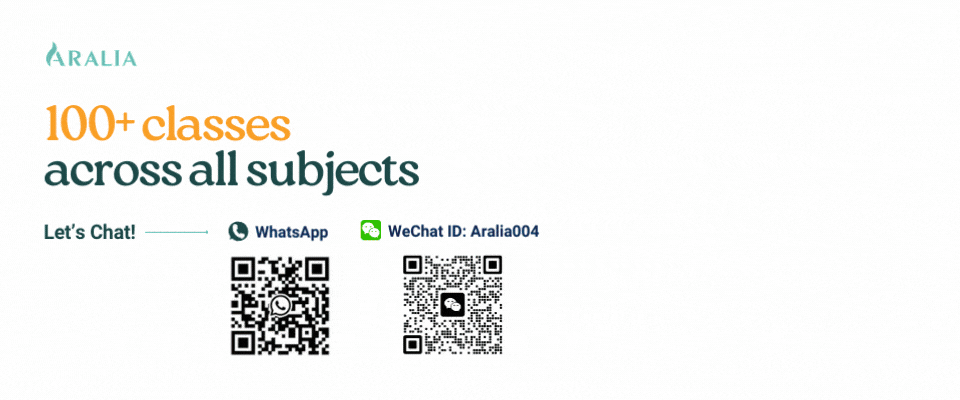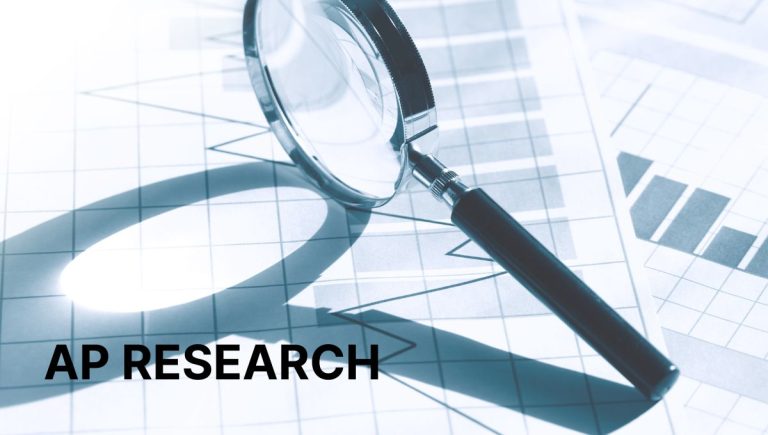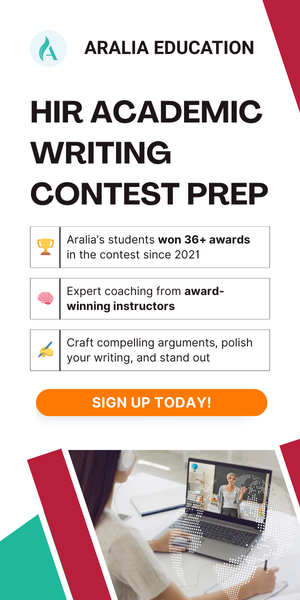Enhance Your Research Skills with Aralia’s Research Scholar Classes
1. What is the National High School Journal of Science (NHSJS)?
The National High School Journal of Science (NHSJS) is a free, online, peer-reviewed research journal founded and designed for high school students to read and publish their own research articles. High school students who have conducted unique scientific research can submit their research papers to NHSJS for a chance to be published in a reputable science journal. Submissions to NHSJS are reviewed by a Scientist Advisory Board of professional researchers as well as Peer Reviewers. Students will receive in-depth, valuable feedback that will not only improve the selected research paper, but all of their scientific research and writing going forward.
Students can submit research articles in one of two categories: 1) original research that you’ve conducted as a high school student or 2) an essay describing significant developments in science and policy. Students can write about research in the following subjects: Biology, Chemistry, Computer Science, Math, Neuroscience, Physics, Policy, Social Sciences (e.g. Psychology, Marketing, Economics, Sociology, Education). Click on each subject to see what articles have been published in each subject.
2. Who is eligible to submit to NHSJS?
High school students between 9th to 12th grade from schools located anywhere in the world are all welcome to submit their research to the National High School Journal of Science. The NHSJS acceptance rate is estimated to be at roughly 65%.
3. How much does it cost to publish?
Even though the journal is free to submit, there is a $250 publication fee if your research paper or short review is selected by NHSJS.
4. How do I submit to NHSJS? How do I format my paper?
If you’re submitting a research paper or review paper to be published in the National High School Journal of Science, format your papers in the following order.
- Title
- Authors and Affiliations
- Abstract: In 200-250 words, briefly outline the background/objective, methods, results, and conclusions. Include a list of keywords or relevant phrases.
- Introduction: Illustrate the background and context of your research topic, clarify the problem statement and rationale, significance and purpose, objectives, scope and limitations, and theoretical framework.
- Results
- Discussion: Restate key findings, state implications and significance, connection of objectives, recommendations, limitations, and closing thought. Avoid adding new information.
- Methods (for Research Papers): Include your research design, participants or sample, data collection, variables and measurements, procedure, data analysis, and ethical considerations.
Methods (for Review Papers): Include your search strategy, inclusion criteria, data extraction, synthesis method, and quality assessment.
- Acknowledgments
- References
The Submission Guidelines offer in-depth descriptions of what each section requires.
Ready to submit? Request a submission form from NHSJS.
Aralia Students Are 4x More Likely to Publish a Research Paper
5. What types of research papers can I submit to NHSJS?
The two overarching types of research articles that students can submit are “original research” and “short article.” Further breaking it down, there are five acceptable types of short articles.
Original Research:
In an original research article, the author presents their novel findings from a structured, controlled research experiment. The article should include an abstract, introduction, up to six figures or tables, sections with subheadings, and a maximum 40 references. Authors will also submit supporting online materials, which include a list of materials, the scientific procedure followed in the experiment reiterated in minute detail, and a research objective.
Short Article – Report (Literature Review):
In a literature review, the author describes significant developments in science, such as ongoing research or new advances. This short article can have a maximum of four figures or tables and a maximum of 40 references.
Short Article – Policy:
A policy short article addresses issues related to science that have public policy implications.
Short Article – Media:
Media type short article reviews the latest books, multimedia, exhibitions, and films in science that would benefit high school students.
Short Article – Technical Comments:
Short articles in the technical comments category discuss papers recently published in the National High School Journal of Science. Authors may include up to two figures or tables. Authors of the papers discussed at hand can reply to this short article, engaging in intellectual, friendly, curious discussion and debate.
Short Article – Letters:
In a letter short article, the author either discusses papers recently published in the NHSJS or addresses issues of general interest. These letters are submitted directly to the director of the National High School Journal of Science.
6. What’s the publication timeline for NHSJS?
The publication timeline for the National High School Journal of Science (NHSJS) involves several steps:
Initial Review: The Editorial Staff reviews the submitted paper and either rejects it or sends it for peer review; this process takes 1-2 months
Peer Review: The paper is reviewed by one or two peer reviewers, which consists of exemplary high school students and undergraduate college students, and the NHSJS Scientist Advisory Board, consisting of respected assistant university professors, science research lab managers, PhD students, post graduate students, and undergraduate college students.
Advisory Board Review: A member of the Scientist Advisory Board provides further feedback. The Scientist Advisory Board consists of dedicated researchers and professors who have volunteered their time and expertise to guide the next generation of scientists. They provide valuable feedback which benefits both the original author as well as peer reviewers, which takes about 1 month.
Author Revision: The paper is returned to the author for revisions, this process takes 1 month
Final Editing: The Editorial Staff conducts copyediting, layout formatting, and proofreading.
Publication: The final version is published online.
For more details, visit NHSJS Peer Review Process.
7. Preparing for the National High School Journal of Science
Excited to try your hand at scientific writing and get published? Start this summer and conduct research with Aralia Education! Our expert science teachers from top U.S. high schools and colleges can smoothly guide you through your research project and provide state-of-the-art research resources. Inquire about how you can conduct original research with Aralia Education! We can assist you with scientific research in the broadest sense of the term—whether you’re interested in the three core fields of Biology, Chemistry, and Physics or Psychology or Economics in the social sciences, we have a program for you!
Further Reading: 17 Research Journals for High School Students
8. Spend the summer researching with Aralia College Accelerator Program
Aralia College Accelerator Program offers a diverse range of research classes designed to nurture profound interests and showcase students’ potential for future success to admission officers. Our research classes are tailored to various interests, including Business, History, Language & Literature, Mathematics, Reading and Writing, Social Science, Speaking, and Visual Arts. Our teachers will guide students in preparing a college-ready research paper for college applications and writing portfolios.
















